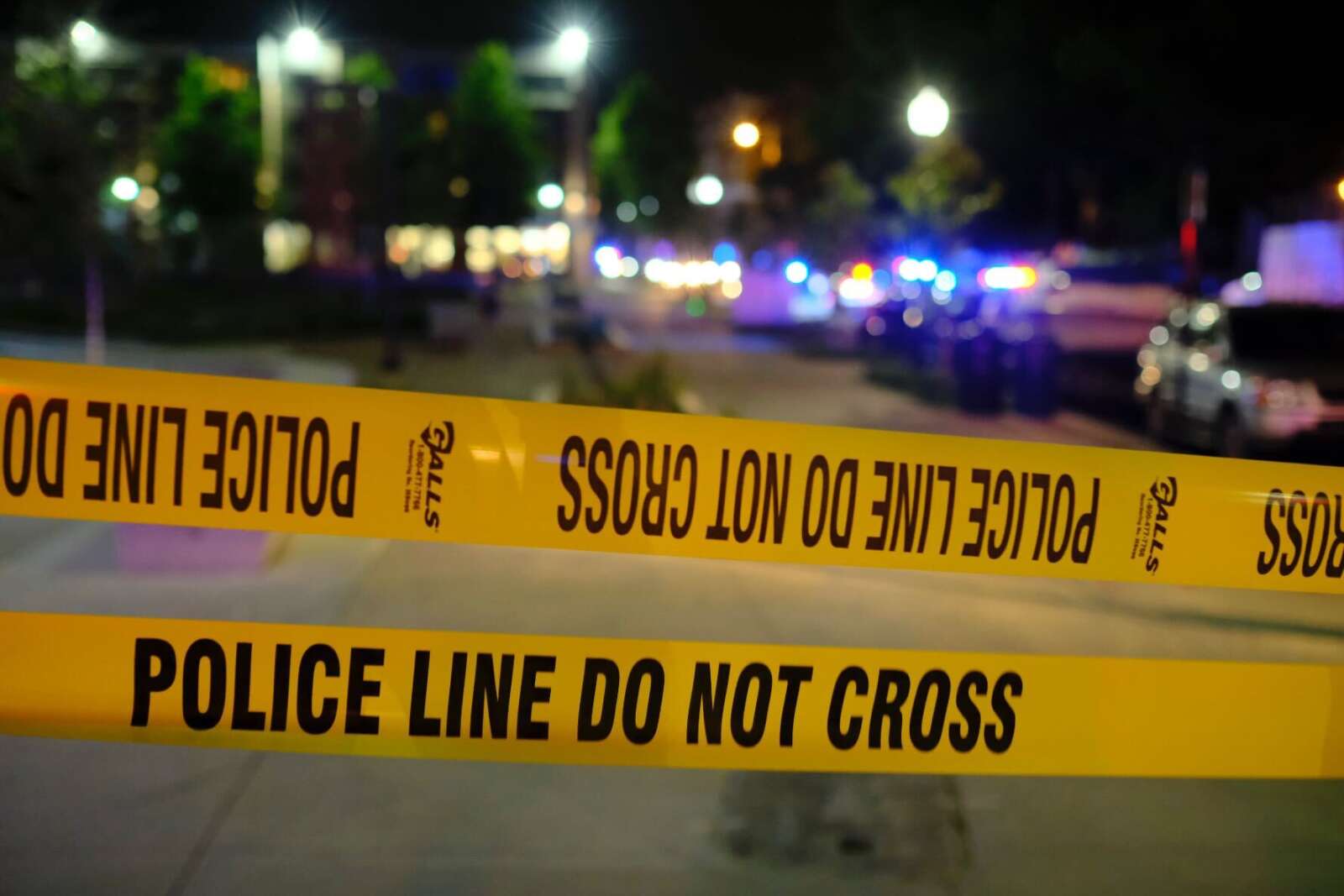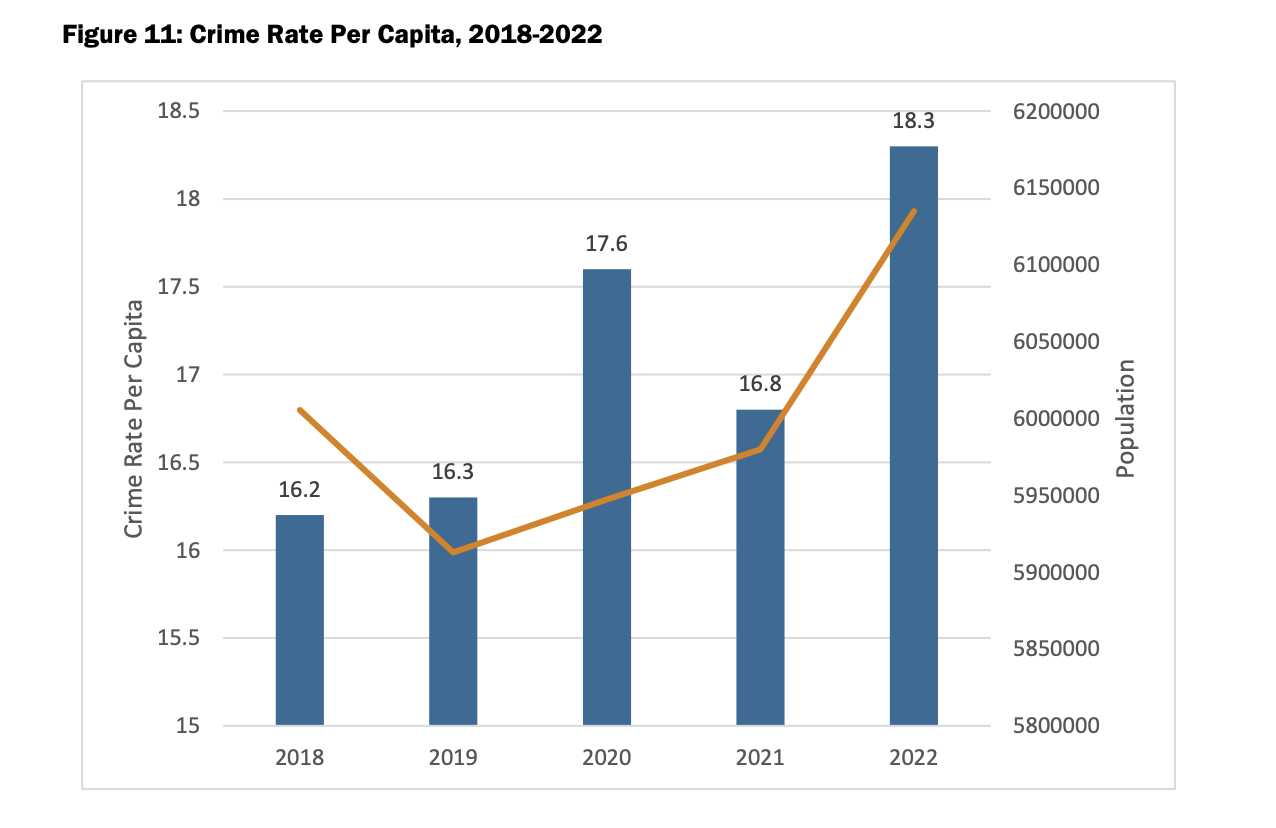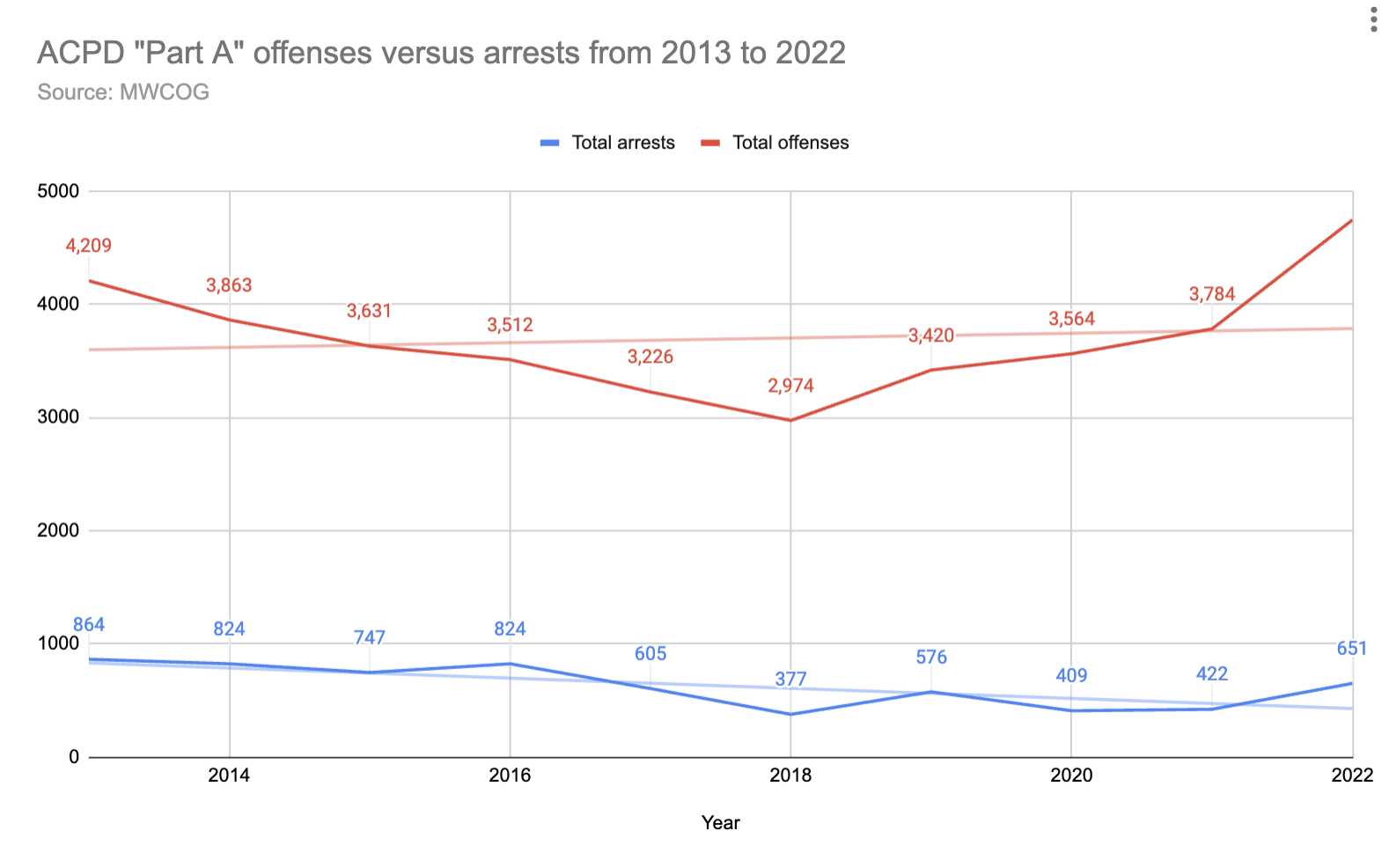
Arlington has a slightly higher than average crime rate compared to the region overall, according to a new report.
The Metropolitan Washington Council of Governments recently released its annual report, in which it compiled crime statistics reported out by local police departments, including Arlington County Police Department.
Overall, MWCOG found the D.C. area is seeing 18.3 crimes per 1,000 people involving rape, robbery, aggravated assault, burglary, larceny and motor vehicle theft. This is higher than the 2021 rate of 16.8.
Arlington County’s rate increased from 15.9 to 19.7 and is now higher than the regional average, though the lowest in the region’s urban core, which also includes Alexandria and D.C. The former claims second-highest rate, at 20.8, and D.C. claims the highest crime rate, at 40.6.
Larger, more suburban counties tend to have lower crime rates, including Fairfax County, with a rate of 15.6 crimes per 1,000 people.
“This is something that you didn’t necessarily know the data point but you knew to be true: crime is increasing across the region and, right now, is at elevated levels that we haven’t seen in quite some time,” Arlington County Board Chair Christian Dorsey said during a meeting on Tuesday.

Among Northern Virginia jurisdictions, Arlington saw a 25% increase in offenses, the median rise in crime for its Virginian neighbors.
“We’re all struggling and we’re not struggling any more than anyone else,” Dorsey said.
Property crimes drive the trends regionally, according to 5-year trends in the MWCOG report. That appears to be reflected locally, with an uptick of reported motor vehicle thefts: 412 thefts in 2022, up from 313 in 2021.

Carjackings are this year’s headline-grabbing offense, regionally, one that Dorsey stressed is thorny to tackle.
“There is a lot of interagency cooperation on these issues, but they are also quite difficult for police to bring to a satisfactory conclusion in terms of arrests and prosecutions,” Dorsey said.
Earlier this month Arlington surpassed the total number of carjackings from 2022, according to ARLnow’s count. While the county is seeing more carjackings, they are still less common than in D.C. and Prince George’s County, according to heat maps by the Washington Post.
One crime for which Arlington is an outlier, according to Dorsey, is assaults.
“We experienced a ridiculously huge increase in aggravated assaults in the year and are definitely a regional outlier, and not in a good way, with a 43% increase,” Dorsey said.
ACPD says “aggravated assault” is a category that includes distinct 20 felonies and three misdemeanor charges, spanning a broad range of crimes, including:
- throwing items at occupied vehicles
- brandishing firearms or similar-looking objects
- child abuse
- malicious wounding
The fact that 23 different charges encompass “aggravated assault” makes it difficult for community members to understand what exactly is happening in their community, says Chuck Miere, a Virginia criminal justice reform lobbyist who dug into ACPD data earlier this year.
“There’s very little transparency as to what gets counted year to year as falling into any of these categories because there isn’t a single ‘aggravated assault’ charge in Virginia,” he tells ARLnow. “There are a bunch of assault charges that can be aggravated.”
In his analysis, which went viral around the time of the Democratic primary for the Commonwealth’s Attorney, Miere claimed ACPD might be playing “fast and loose” with data, linking possible changes in how the department categorizes and counts simple assaults to the uptick in reported assaults.
Virginians for Safe Communities — which unsuccessfully tried to recall Arlington and Falls Church Commonwealth’s Attorney Parisa Dehghani-Tafti — argued Miere was doing the same thing. Annual reports since 2018, with data going back to 2014, count simple assaults separate from aggravated assaults and detail an increase in both over several years.
Ultimately, Miere says, crime data do not tell the full story — arguing that crime rate reporting should also address arrest rates, the percentage of crimes that result in charges — known as a clearance rate — and prosecution rates.

Arlington’s new Community Oversight Board and its independent policing auditor, Mummi Ibrahim, are looking into these very trends as well as the increase in crime and arrests in the MWCOG report.
“Crime and arrest statistics are available online from the Virginia State Police, and our office has been analyzing those and additional datasets and are planning to issue an independent report analyzing both changes in reported crime in Arlington County, as well as the arrest and clearance figures related to those offenses,” Ibrahim said.
This may be included in a forthcoming annual report, available in December, or as a stand-alone report, she said.
Fresh from discussing domestic violence reduction efforts in Arlington earlier in Tuesday’s meeting, Dorsey took time to discuss the number of rape cases here and regionally.
ACPD reported 40 rapes, compared to 168 in D.C., eight in Alexandria and two in Falls Church. Dorsey questioned the reporting from Arlington’s neighbors.
“What we see are what I perceive to be artificially low numbers coming from other jurisdictions and Arlington’s hover at an area that are far too high for what I would like to see, but it seems to be consistent with a culture of reporting,” he said.
Board member Takis Karantonis, meanwhile, emphasized that policy-makers looking at the data need to discuss the link between some of these crimes and inequality.
“What a long way we have to go to really comprehend all the connections between these,” Karantonis said. “The point is that we understand that public safety is not anymore just an an enforcement issue but it’s a social balance issue.”

